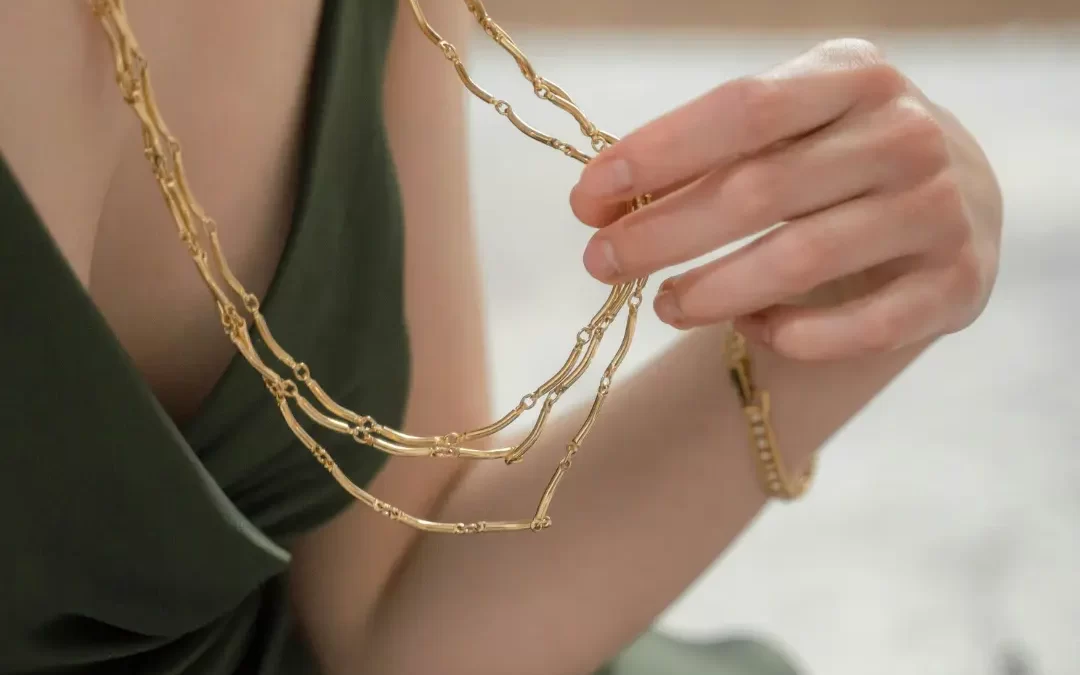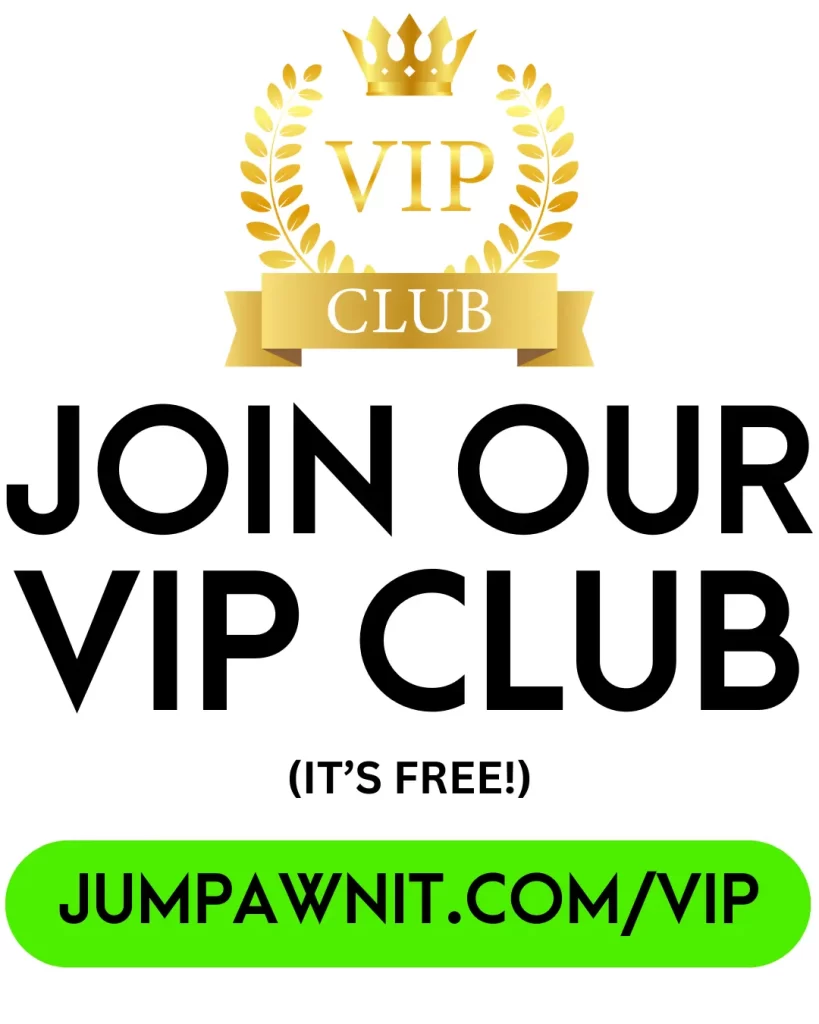Summary
Our Ultimate Gold Karat Guide explains everything you need to know about gold karats so that you understand exactly what you're getting and exactly what you're paying for.
When shopping for gold jewelry, you’ve probably come across terms like 10K, 14K, 18K, 22K, and 24K. But what do these numbers mean, and how do they impact the quality, appearance, and price of your gold pieces? Our Ultimate Gold Karat Guide breaks down the differences between gold karats in simple terms to help you make an informed decision when buying gold jewelry. Whether you’re looking for something durable, luxurious, or affordable, understanding gold karats is key. If you’re in the market for a new gold piece, our pawn shops offer the best prices on gold jewelry, no matter your karat of choice.
What Are Gold Karats?
Gold karats measure the purity of gold. Pure gold is 24 karats (24K), meaning it’s 100% gold with no other metals mixed in. But, because pure gold is a soft precious metal that can easily scratch or bend, it’s often mixed with other metals like copper, silver, or nickel to make it more durable. This mixture results in different karat levels, each offering a unique balance of purity, strength, and color.
Gold Karat Guide: How to Read Gold Ratings and Stamps
- 24K Gold: Pure gold (99.9% gold) | Stamp: 999
- 22K Gold: 22 parts gold, 2 parts other metals (91.6% gold) | Stamp: 916
- 18K Gold: 18 parts gold, 6 parts other metals (75% gold) | Stamp: 750
- 14K Gold: 14 parts gold, 10 parts other metals (58.3% gold) | Stamp: 585
- 10K Gold: 10 parts gold, 14 parts other metals (41.7% gold) | Stamp: 417
Stamps are usually found on the inside of rings, clasps of chains, or on other discrete areas of jewelry. These stamps on gold jewelry serve as a quick reference for the gold’s purity.
Differences Between Gold Karats Explained
24K Gold: Pure and Luxurious
24K gold is the purest form of gold you can buy, consisting of 99.9% gold. It’s known for its vibrant, rich yellow color and is highly sought after for its purity and beauty.
Pros:
- Highest purity: 24K gold is almost pure, making it the most valuable type of gold.
- Rich color: Its bright, yellow hue is unmatched.
- Hypoallergenic: Being nearly pure, it’s less likely to cause any allergic reactions.
Cons:
- Soft and malleable: 24K gold is very soft and can scratch or bend easily, making it less ideal for everyday wear.
- Expensive: Due to its purity, 24K gold is the most expensive.
Best For:
Customers who want the purest, most luxurious gold available and are less concerned about durability. 24K gold is perfect for special occasion jewelry or investment pieces.
22K Gold: A Balance of Purity and Durability
22K gold is composed of 91.6% gold, with the remaining 8.4% made up of other metals. This mix keeps much of the rich color of 24K gold but adds a bit more durability.
Pros:
- Rich color: 22K gold has a similar deep yellow color to 24K gold.
- Good durability: Slightly stronger than 24K, more resistant to wear and tear.
- High value: Still has a high level of purity, making it valuable.
Cons:
- Slightly less durable than lower karats: Still softer than 18K, 14K, and 10K gold.
- Expensive: Although less expensive than 24K gold, 22K is still relatively costly.
Best For:
Those who want high-purity gold with a beautiful color that’s slightly more durable than 24K gold. It’s ideal for high-end jewelry that’s worn occasionally.
18K Gold: Luxurious and Durable
18K gold consists of 75% gold and 25% other metals. It’s a popular choice for high-end jewelry because it offers a great balance of purity, durability, and color.
Pros:
- Beautiful color: 18K gold has a rich, warm color that’s close to pure gold.
- Durable: More durable than 22K and 24K gold, making it suitable for daily wear.
- High value: Contains a significant amount of gold, so it’s still valuable.
Cons:
- More expensive than lower karats: Due to its higher gold content, 18K gold is more expensive than 14K and 10K gold.
- Slightly prone to scratches: Though durable, it can still scratch if not cared for properly.
Best For:
Customers looking for a luxurious gold that’s also durable enough for everyday wear. 18K gold is perfect for engagement rings, bracelets, and other frequently worn jewelry.
14K Gold: The Perfect Mix of Durability and Affordability
14K gold is made up of 58.3% gold and 41.7% other metals. It is widely regarded as one of the most popular choices for jewelry because it combines durability, beauty, and affordability.
Pros:
- Durable: Stronger and more scratch-resistant than higher karat golds, making it ideal for everyday wear.
- Affordable: Less expensive than 18K, 22K, and 24K gold, but still maintains a beautiful color.
- Versatile: Available in various colors, including yellow, white, and rose gold.
Cons:
- Less pure: Contains less gold than 18K and higher karats, so it’s slightly less valuable.
- Color: The color is slightly less vibrant than higher karat golds.
Best For:
Customers who want a durable, beautiful, and affordable option for everyday jewelry. 14K gold is ideal for wedding bands, necklaces, pendants, and earrings.
10K Gold: Affordable and Durable
10K gold contains 41.7% gold and 58.3% other metals, making it the least pure, but most durable and affordable option.
Pros:
- Highly durable: The high percentage of other metals makes it very resistant to scratches and dents.
- Affordable: The least expensive option, making it accessible for budget-conscious shoppers.
- Versatile: Suitable for a wide range of jewelry, including rings, bracelets, and pendants.
Cons:
- Less pure: Contains the least amount of gold, making it less valuable than 14K, 18K, 22K, and 24K.
- Color: The color is less rich and vibrant compared to higher karat golds.
Best For:
Customers looking for an affordable and durable option for everyday wear. 10K gold is perfect for those who want a gold look without the higher price tag.
How Gold Karats Impact Price
Gold karats significantly affect the price of your jewelry. The higher the karat, the more pure gold the piece contains, which increases its value. Here’s a quick breakdown:
- 24K Gold: Most expensive due to its purity.
- 22K Gold: Slightly less expensive than 24K, but still premium.
- 18K Gold: Mid-range price, balancing luxury and durability.
- 14K Gold: More affordable while still maintaining good value.
- 10K Gold: Most affordable, ideal for budget-conscious buyers or those seeking extra durability.
Why Buy Gold from Jum-Pawn-It Jewelry and Loan?
At Jum-Pawn-It Jewelry and Loan, we offer a wide selection of gold jewelry in every karat, from 10K to 24K, all at unbeatable prices. Whether you’re looking for a durable 10K piece for daily wear or a luxurious 24K item for the most special of occasions, we have something to suit every taste and budget. Plus, buying from us means you’re getting high-quality jewelry for a fraction of what you’d pay at big-box retailers or malls.
Visit Us Today for the Best Prices on Gold
Understanding gold karats can help you make the best choice for your needs and budget. Whether you prefer the richness of 24K gold or the durability of 10K, Jum-Pawn-It Jewelry and Loan has you covered. Visit us today to shop our massive collection of gold jewelry and find the perfect piece at a price you’ll love! Layaway and interest-free financing options are available. We have four pawn shops located in Uptown Whittier, CA, Riverside, CA, Lake Havasu City, AZ, and Bullhead City, AZ.
Not near one of our pawn shops? Shop with us online!
And be sure to tag us in some photos with your new gold piece(s)!





